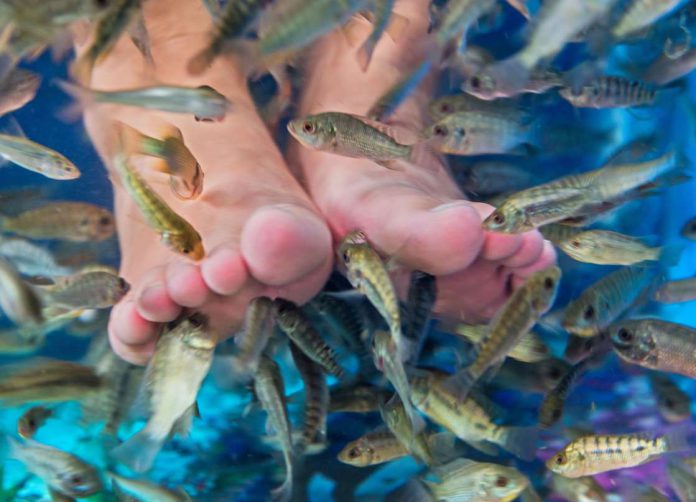Going for a fish pedicure?
Know the risks before opting for a fish pedicure!
For those who don’t know what a fish pedicure is:
It is a foot treatment in which feet are immersed in a tank/tub
of water full of small fish called the ‘Doctor Fish’ or ‘Garra rufa.’ The
temperature of the water is usually maintained between 25 to 30 °C.
The aim of this pedicure is similar to the other typical pedicures, i. لعب قمار حقيقي e., to
remove the dead skin.
Additionally,
fish pedicure is also known to help patients with psoriasis as a study
revealed that these fish remove the psoriatic skin but spare the normal
skin.
Naturally, the doctor fish use suction to stick to rocks,
etc. A similar mechanism is exercised to stick to human skin. Being omnivorous,
these fish feed on human skin when deprived of plant sources. The toothless
Garra fish nibbles for 15 to 20 minutes and removes the dead skin.
Are there any risks?
A
20-year-old woman complained of halted toenail growth after receiving a fish
pedicure. Her toenails stopped growing and started to fall off, which was all
attributed to her fish spa by her and Dr. Sheri Lipner, who is an assistant
professor of dermatology at Weill Cornell Medicine.

Dr.
Lipner was convinced that fish pedicure resulted in onychomadesis as
there were no other factors that could have led to it. She said:
“It is
likely that direct trauma caused by fish biting multiple nail units causes a
cessation in nail plate production. To my knowledge, this is the first case of
onychomadesis associated with a fish pedicure.”
But some might argue with the conclusion. For instance, Dr.
Chris Adigun, a board-certified dermatologist and nail specialist in North
Carolina, didn’t agree with Dr. Lipner’s conclusion. Dr. Chris believes that
the woman in question here had a condition called retronychia, which occurs secondary
to undue pressure on the toenails, consequently resulting in the growth of
multiple layers of nails, thickening the nail. These layers then peel off to
give an impression of toenails falling off.
Dr. Chris contradicted by saying:
“It’s [a] condition that I see pretty frequently
from women who wear tight-fitting shoes. I think, for the most part, fish
pedicures are probably harmless. It can’t get to the nail-making tissue because
it’s under the nail.”
She further added:
“I think she was wearing the wrong shoes.”
Whatever
the conclusion might be in this case, one thing has been determined that fish pedicures
are not as safe as advertised. There have been reports of a woman suffering
from osteomyelitis and consequently losing her toes after a fish spa. Additionally,
Dr. Lipner’s work reveals that fish spa also leads to bacterial infection as
the fish used to eat away the dead skin can be the carrier of any pathogen.
Nonetheless,
fish pedicure is banned in many countries, including the 10 states of America and
some European countries too. The Health Protection Agency is aware of
the spas functioning in the UK and has concluded that there is some risk associated
with fish spa, but the risk is too low. The agency has issued a complete set of
guidelines
regarding who should avoid the fish spa.
Still
willing to get a fish pedicure?




